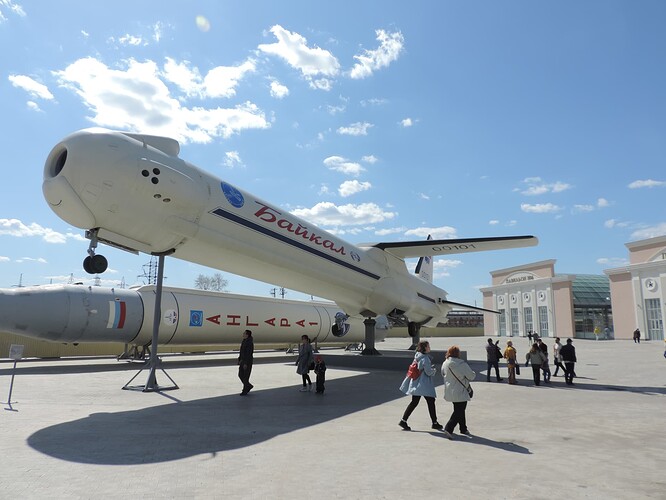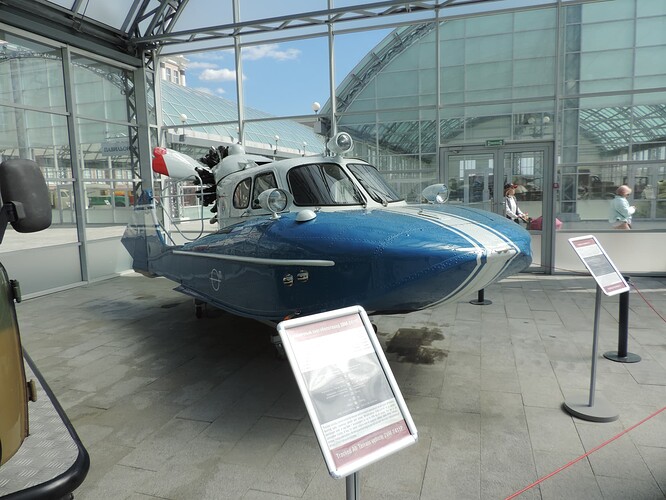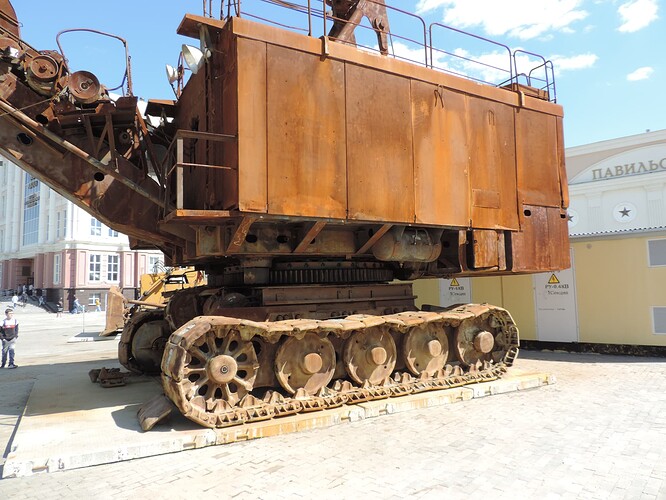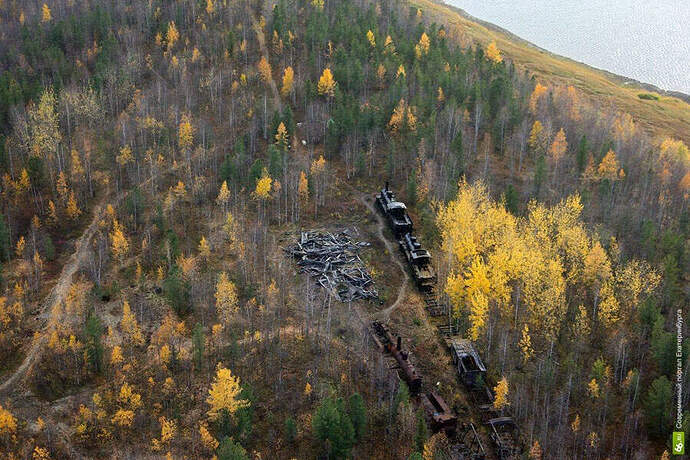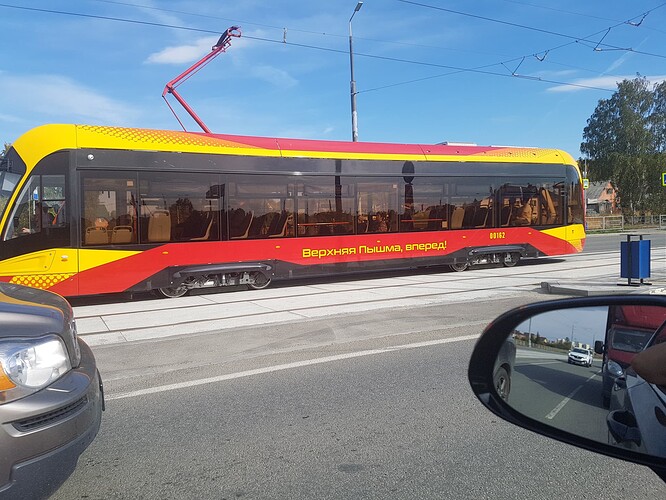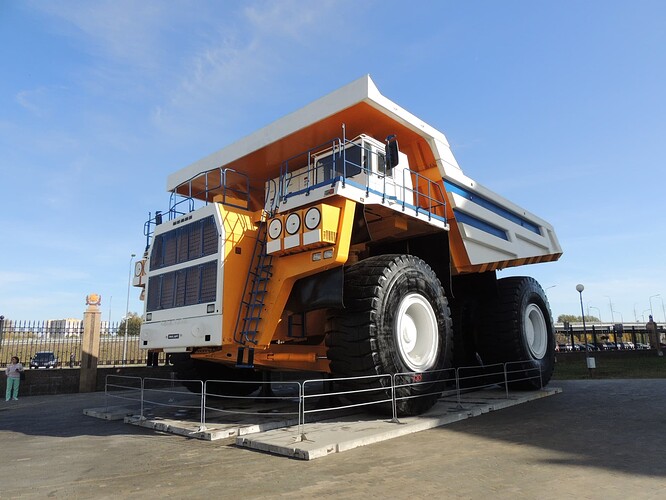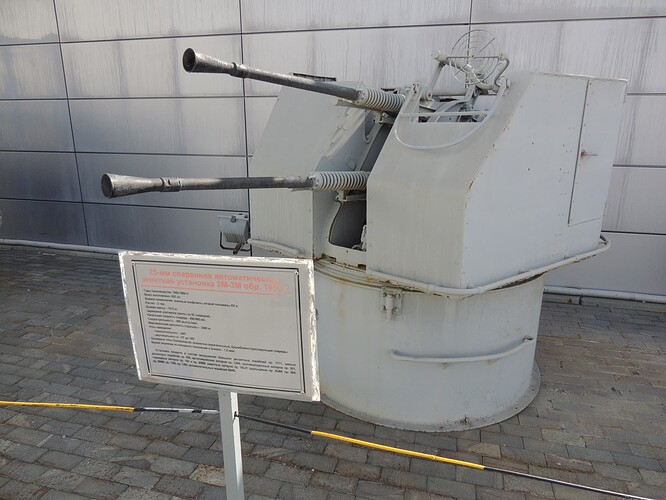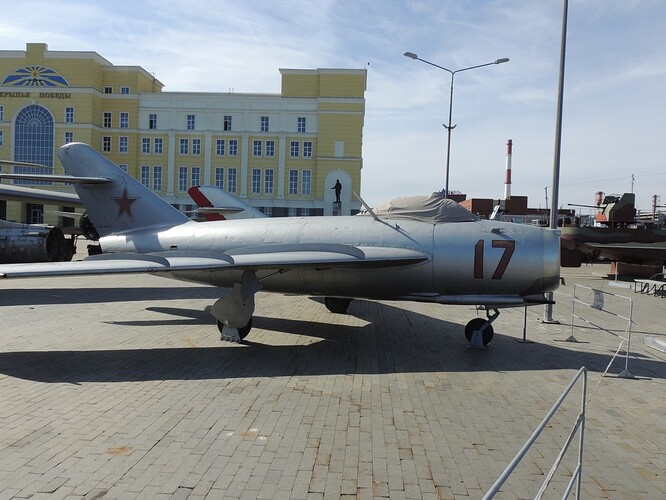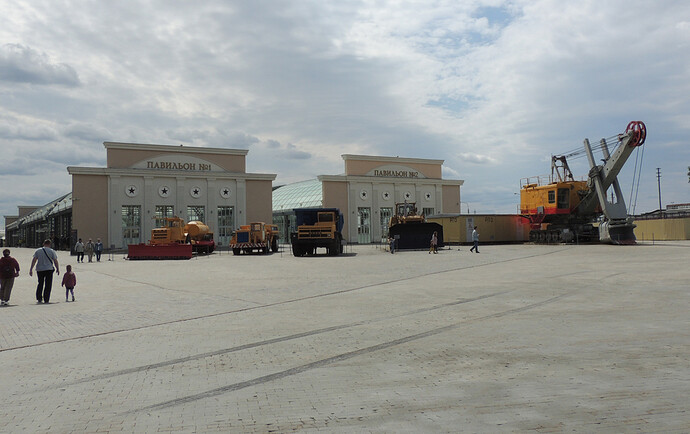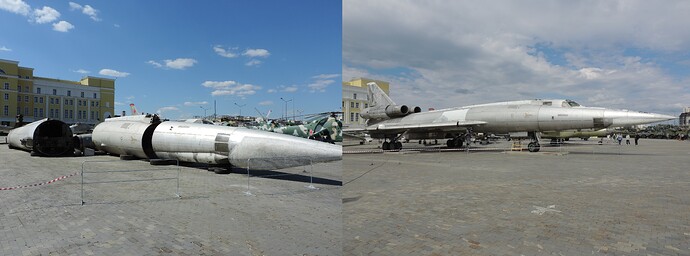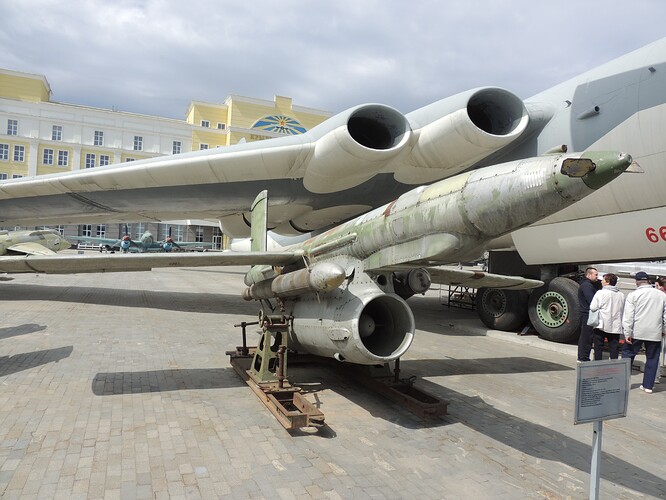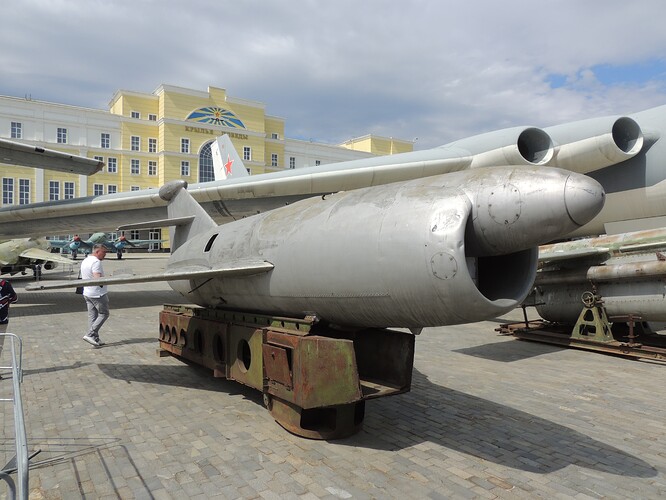And the last report on the last visit to this museum.
All my visits I entered the museum through the same entrance. What was my surprise when, this time, having reached the end of the museum, I found another entrance there. And apparently, it is he who is the main entrance. I had to get out and take a picture
and go back in. So the story I will lead in opposition to the real course of events.
At the entrance to the territory, you immediately run into two huge batons: the Angara rocket and its Baikal booster stage.
Very large devices almost 30 meters long.
And then a series of pavilions begins, of which, as it turned out recently, there are already 6 pieces.
The vast majority of them are still closed, but thanks to their glass walls, you can get an idea of their content.
Only one Pavilion No. 6 will be dedicated to the military theme
The rest houses civilian specialized equipment. Here in this pavilion the equipment of the early Soviet period
and here already the period of “developed socialism” or, as they later began to say, “stagnant period”
This one seems to be completely given over to the iconic Soviet car GAZ-21 “Volga”.
Of all the pavilions, only one is open, in which a very special technique is demonstrated.
Airfield service vehicles
Cross-country mechanisms
How do you like the idea for the “bukhanka” conversion from Zvezda?
The central place is occupied by all-terrain vehicles from the cosmonaut search and rescue squad
One of which bears a proper name: “Blue Bird”. Surely you have already guessed which one. Some of them carry the astronauts themselves, some descent capsules, and some all passable augers, which are also presented here
And behind the pavilions such “shorty guys” hid!
They are both a treasure trove of palettes for those who like to rust models - choose any shade!
You can’t say by the excavator that it is electric - there is clearly a pedal drive for several thousand people inside!
Nearby are exhibits of a slightly smaller order of size and rustiness: BelAZ for 30 tons, a mine dump truck for 22 tons
airfield harvester based on the single-axle MoAZ.
Obviously, all this equipment will be painted and brought into a divine form. Work has already begun on some of the exhibits
Well, I’ll take a look on my next visit and be sure to let you know.
Thank you all very much for your attention and your time. I hope you liked it.
PS. I tried to show you one of the largest and one of the best military-technical museums in Russia. But he is not the only one.
I have ready-made materials for 15 other museums of various kinds. There are many more photos to be processed and even more museums that I plan to visit.
Should I post here information about technical museums in Russia?
- Yes
- No
0 voters
The survey deadline is May 31, 2022.

